|
Matrix Algebra - The inverse matrix
The inverse matrix
The matrix which at multiplication both on the right and at the left on the given matrix gives an identity matrix is called an
inverse
matrix.
Let's designate an inverse matrix to a matrix
A
as
 , then according to the definition we’ll receive:
, then according to the definition we’ll receive:

where
E
– an identity matrix.
The square matrix is called
regular
(
non- singular
) if its determinant is not equal to zero. Otherwise, it is called
singular
.
The theorem takes place:
any regular matrix has an inverse matrix
.
Operation of an inverse matrix finding is called the
inversion
of a matrix. We’ll consider algorithm of the inversion of a matrix.
Let the regular
n
-th order matrix is given:
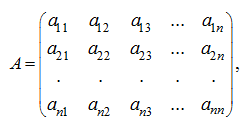
where Δ = det
A
≠ 0.
Algebraic addition
of an element
 of the
n
-th order matrix
A
is called the determinant of the (
n
–1)-th order matrix taken with a certain sign and received by deletion of the
i
-th row and the
j
-th column of the matrix
A
:
of the
n
-th order matrix
A
is called the determinant of the (
n
–1)-th order matrix taken with a certain sign and received by deletion of the
i
-th row and the
j
-th column of the matrix
A
:

Let’s make the so-called
adjoint
matrix:

where
 – algebraic additions of appropriating elements
– algebraic additions of appropriating elements
 of matrix
A
.
of matrix
A
.
Let's notice, that algebraic additions of elements of the matrix
A
rows are placed in appropriating columns of the matrix
Ã
, that is a matrix transposing is made at the same time.
Dividing all elements of matrix
Ã
by Δ – value of determinant of a matrix
A
, we’ll receive as a result an inverse matrix
 :
:
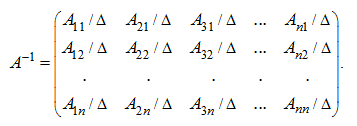
Let's note a number of special properties of an inverse matrix:
1) for the given matrix
A
its inverse matrix
 is unique;
is unique;
2) if there is an inverse matrix
 a right and a left inverse matrices coincide with it;
a right and a left inverse matrices coincide with it;
3) the singular square matrix has no an inverse matrix.
The basic properties of an inverse matrix:
1) the determinant of an inverse matrix and a determinant of an initial matrix are inverses;
2) the inverse matrix of product of square matrices is equal to product of inverse matrices of the factors, taken upside-down:

3) the transposed inverse matrix is equal to an inverse matrix of the given transposed matrix:

E x a m p l e . Calculate a matrix, inverse to the given one:

S o l u t i o n . The determinant of the matrix
A
is equal:
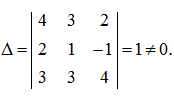
Consequently, the matrix
A
is regular. The adjoint matrix
Ã
looks like:
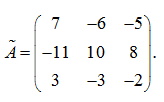
Dividing all elements of the adjoint matrix
Ã
by Δ = 1, we’ll receive the inverse matrix:

Let's check up, that the quality
 is valid:
is valid:
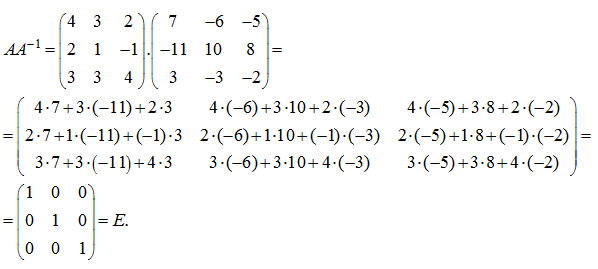
Thus, the found matrix
 is inverse for the given matrix
A
.
is inverse for the given matrix
A
.
|








